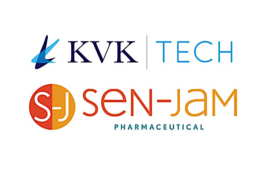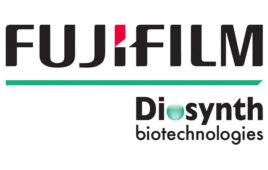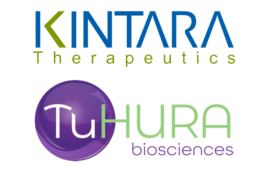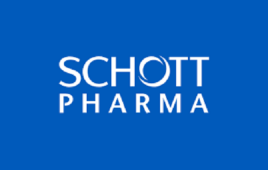Not every drug has to be blockbuster. And not every pharmaceutical
company is necessarily interested in developing blockbusters.
There are plenty of opportunities for pharmaceutical companies to be
successful by focusing their efforts on developing and producing products aimed
at smaller but no less deserving patient populations.
The FDA classifies these diseases as “orphans” and even has a special
approval process to fast track treatments for therapies that are needed
immediately – but might not be lucrative enough for bigger companies to
develop.
This is where companies like United Therapeutics, based in Silver Spring, MD,
step in and take over. The company has successfully merged cutting-edge
technologies and a new facility with their desire to never let their patient
population be without their medications.
A Personal Commitment
A parent would do anything for an ailing child. And the founder of
United Therapeutics is no different. When Dr. Martine A. Rothblatt, the
company’s founder, chairman and CEO, needed to find a treatment for her
daughter’s Pulmonary Arterial Hypertension (PAH), she took it upon herself to
research the disease. This led to acquisition of a compound that was originally
developed by Burroughs Wellcome and the subsequent founding of United
Therapeutics in 1996. That compound, Treprostinil, has since been formulated
into the injectable Remodulin®, currently the company’s flagship product. The
company also markets two other products for the disease: Tyvaso®, an inhalation
therapy, and Adcirca®, a solid dose treatment.
To support the production of the company’s current sterile products and
to meet the needs of a growing product pipeline, the company realized the need
for a flexible facility that would be able to handle a mix of aseptic liquid
and lyophilized products in multiple formats.
To Go “Virtual” Or Not
In this day and age of “virtual” pharmaceutical companies, which
contract out their manufacturing operations and operate mainly as sales and
marketing businesses – it might have been easy for United Therapeutics to take
this route as well. But with patients’ needs in mind and the availability of
technology to allow them to do their own manufacturing – the choice became an
easy one.
Patrick Poisson, Vice-President Manufacturing, looks at the issue this
way, “One of the unique things about our company, which only has about 500
employees worldwide, is what we are capable of from a manufacturing standpoint.
Probably nine of ten companies out there our size would be virtual companies –
they might have some manufacturing capabilities – but it might be just in one
area. We have established commercial scale operations for small and large
molecule APIs, sterile solutions, including injectables and inhalation
products, and solid dose.”
He continues, “We are doing the manufacturing representative of a much
larger company. Many might consider this contrary to how businesses are run
today – limit the bricks and mortar, outsource, and keep the costs down.” The
choice to establish internal capabilities was a matter of adding redundancy to
ultimately secure the supply chain for their products as Matthew VonEsch,
Manager Manufacturing, says, “When you do full outsourcing with no second site
it adds an element of risk that is certainly undesirable, especially with
orphan drugs where alternatives are either limited or non-existent. By adding
sterile fill capability we can now balance that risk by diverting production to
the most appropriate site, internal or external, to ensure a supply is always
available.”
Not Virtual But Vertical
With the decision made to construct their own facility, the next
decision was where. The company’s corporate headquarters is a 70,500 sf
building located in downtown Silver Spring.
The new building was built on what was an empty parking lot next to the
company’s original lab building which was completed in mid-2006. The challenge
for the company was to build a very flexible and advanced aseptic manufacturing
facility in a very “fixed” space and incorporate that space into a multi-use
building.

Poisson explains, “We needed to have equipment flexibility simply
because of how the facility is built. Walking up to the building, you notice
there is no way to get equipment in or out post-construction. What we have is
what we have. We had to be very careful and think very hard about what
equipment we need to make the products that we are going to be making ten years
from now or even twenty years from now. So we have equipment installed, at a
significant capital investment, which we are currently not using. However we
believe there is a very strong likelihood that we will. So we spent a lot of
time discussing what the future might bring.”
The Tools and Technologies
To make the facility work the way they wanted it to and to fit in the
space they had available, the company turned to, and is currently using, many
advanced technologies. Incorporated into their manufacturing facility is
extensive use of single-use technologies, along with barrier isolation and
Blow-Fill-Sealing filling lines. The
reasons for using these technologies are manifold and most have to do with
maintaining the flexibility of production they needed along with manufacturing
their products in the space they had available.

Custom designed total single-use disposable technology on the barrier isolation glass vial line
In particular, the isolators have fulfilled a very important need for
the company, as Poisson explains, “We have two filling lines making sterile
products (BFS and barrier isolation) and we don’t have to worry about any ISO 5
clean rooms – all the critical environments are self-created by the equipment.”
VonEsch continues, “Thanks to the isolators we have shrunk our
footprint. If we wanted to have traditional ISO 5 areas our facility would have
to be much larger, space we just didn’t have. We had a fixed space here.
Basically it was this is your building – how do you make it work.”
Poisson adds “We had a greenfield
facility that had very little room to work with. This was an office building –
with no manufacturing space. Permits were issued before it was decided to add
manufacturing. So we had a footprint that we had to work with that there was no
way to alter.”

The Blow/Fill/Seal line featuring grey side/white side operation
VonEsch, “We had to go up instead of out. Traditional aseptic processing
areas can take up a significant amount of space, because of the HEPA filtration
around it. It’s cheaper to build facilities like that but the cost to maintain
them is dramatically higher, because of the air handlers, electricity and
constant gowning. Since we were space constrained, we had to make an ISO 5 area
in a space that was too small for a traditional ISO 5 area.”
Recent advancements in technology have also helped the company. For
example the company’s lyophilization line features auto-loading technology that
wasn’t available years ago. In fact, the technology on the lyo line is so
advanced and so flexible that the company can, if need be, fill a lyo product,
and while its lyophilizing, turn the line around, fill a liquid product, close
it, cap it, turn the line around again and then unload the lyophilizer.
The focus on implementing automation wherever it was possible was
critical to the company, and equipment like the Groninger Filling line, Skan
Isolators, Rommelag BFS, and Eisai automatic particle inspection machine have
allowed the company to perform all manufacturing processes with a lean
manufacturing team. VonEsch said, “It’s the same personnel that operate the BFS
process as the liquid filling process; our manufacturing associates are becoming
experts on not one advanced aseptic process, but two, and that’s another thing
that makes us unique.”

Close-up view of the barrier isolator glass vial line with single-use disposable technology.
The use of barrier isolator technology allowed the company to eliminate the use of cleanrooms and reduce its footprint.
VonEsch feels that this has to be way to do things in the future, “I
think this has to be the trend with every manufacturer. Building a dedicated
facility for a single product is limiting and not cost effective. Building a
flexible facility like ours – allows you to manufacture just about any
product.”

Equipment like this automatic particle
inspection machine have allowed
the company to perform all all
manufacturing processes with a lean manufacturing team.
Proud Parents
Just like parents the company is justifiably proud of what they have
accomplished. As Poisson points out, for him, there are a number of standouts,
“I think looking back –it’s our project execution – we completed construction
in early December of 2009. So there were nails still going in until then. We
were given FDA site approval for our first product on April 1, 2011, that’s
about fifteen and a half months to validate, manufacture stability batches,
file and get approval for a commercial facility. We then followed it up with
site approval of a second product on July 22, 2011. That is something,
personally, that I’m very proud of. We had a focused group of people who worked
hard every day to make things happen. It was a tremendous amount of work, it
was daunting at times. Keep in mind this company had no prior experience
running a sterile facility, so there were no resources internally to draw from.
There were a lot of things that were potential roadblocks to our success that
we were able to overcome. It was through the use of bringing in additional
experienced people, identifying validation resources, working with our vendors,
understanding our products and how we were going to make them that contributed
to making this pretty big effort a success. I don’t know of anyone who did what
we did any faster.”
The Future
With their facility running as planned, it’s now time for them to look
toward the future.
“We will continue to focus on operating this facility,” says Poisson,
“we have products in the pipeline.” He continues, “And I’m excited now that we
have the option to make them here. I think that’s something that will benefit
the company. Our timelines will be getting shorter as we can fill tomorrow if necessary, And we will be able to see the benefit in
things like how quickly can we file NDA’s/BLA’s – we will be able to start
clinical trials quicker, all this excites me.”
VonEsch offers his own views on the company’s future, “Personally, I’m
looking forward to developing new products and continuing to manufacture our
existing commercial ones. Also, our isolator technology is new to the agency
and being able to showcase that technology to the FDA and show them how we use
it is a great opportunity.”
“I will also continue to work with our vendors to make our equipment
work even better. We are all actively involved in that process. We are all
trying to learn as much as we can and take these learning’s to apply to the
equipment of the future. Its companies
like Groninger, Skan, Rommelag, etc that want to take real world working knowledge
and apply it to the equipment for tomorrow.”
“Perhaps the biggest takeaway is how much we accomplished with a small
team. We all wanted to build a facility to make a product for our patients so
they would always be assured of a supply.”





